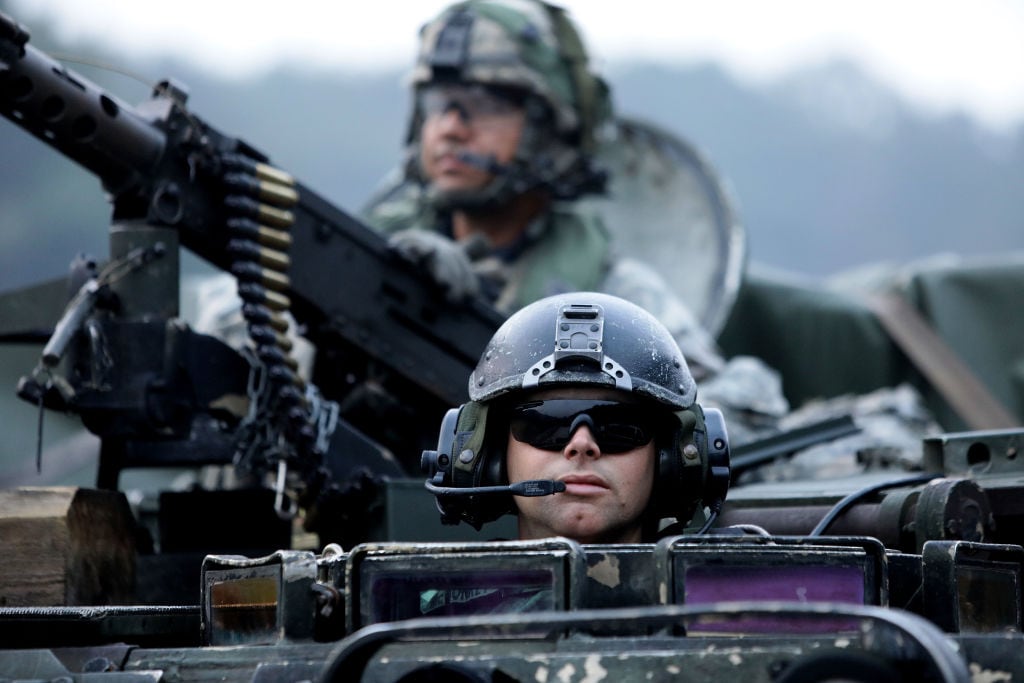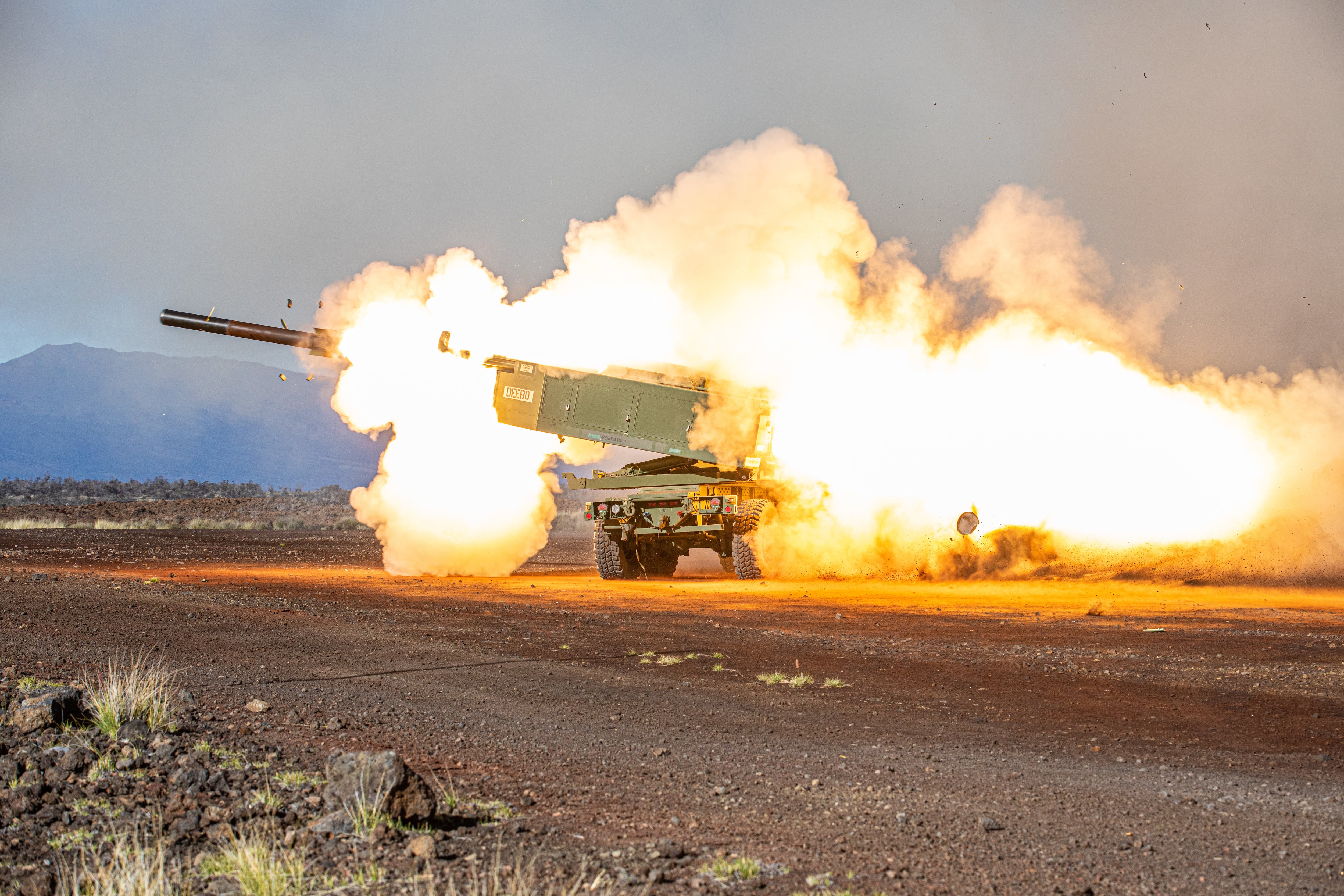WASHINGTON — Top Army officials expected to face difficult choices in 2024. They had warned reporters this budget might require them to ax legacy programs or delay some planned modernization efforts.
And in a worst-case scenario, the officials said, they might even have to cut key modernization efforts.
Indeed, the Army was facing obstacles as it prepared the fiscal 2024 spending plan, from rising inflation to missed recruiting goals to supporting war-torn Ukraine.
But in March the service rolled out a $185.5 billion budget with few surprises and none of the significant cuts officials had braced for. Instead the service had used Ukraine supplemental funds in key programs, allowing the U.S. Army to bolster several initiatives, even though its regular spending plan showed essentially no growth.
“The supplemental funding is the untold story about how it helps the Army,” Tom Spoehr, a research supervisor at the Heritage Foundation think tank, told Defense News.
The Army kept its budget close to FY23 levels, with its FY24 proposal calling for a 4.6% increase over the Army’s $178 billion budget last year. But inflation means the new budget request falls about 2% below that FY23 enacted amount, Maj. Gen. Mark Bennett, the service’s budget director, told reporters in a March briefing.
The Army already received in total $8 billion in procurement funding and another $6.7 billion for operations and maintenance in FY22 and FY23 through congressionally appropriated supplementals. The money is meant to help the service replenish supplies sent to Ukraine.

The supplemental funding the Army received represents about one-third of its annual procurement budget.
In contrast, the Navy received $4.6 billion total in supplemental funding across FY22 and FY23, and the Air Force received $4.9 billion.
The supplemental funding doesn’t just allow the Army to avoid painful cuts in FY24, Travis Sharp, a fellow at the Center for Strategic and Budgetary Assessments, told Defense News. In fact, it’s accelerating the service’s modernization.
“The Army is getting back equipment that is in some way better than the equipment it gave up,” he said, and “they’re able to get it faster because the demand created by the war in Ukraine has allowed for either an expansion in the industrial base, or the per-unit cost of the systems is coming down because companies are making more.
“Therefore, for a fixed amount of money, the Army can actually afford to buy more systems.”
Moving past the M113
Take the Army’s Armored Multi-Purpose Vehicle, for instance. Since Russia invaded its neighbor more than a year ago, the service has pulled from its stocks to send to Ukraine 400 of the 1960s-era M113 vehicles, which carry troops into battle.
As the Army weighs how best to replace those vehicles, top officials have made clear they do not want to buy more of the outdated M113s.
The service’s chief of staff, Gen. James McConville, told Defense News last year that the Army prefers to replace old equipment with new items. As he put it, the service doesn’t want to add “new-old stuff; what we want to do is buy new-new things.”

The AMPV program was meant to replace the aging M113 fleet and help modernize an armored brigade combat team’s fleet. BAE Systems won the contract nearly a decade ago; the company delivered the first AMPVs to the first unit earlier this month. The Army plans to build and field 2,897 vehicles total, according to FY24 budget documents.
Now, the Army is expected to approve AMPV’s full-rate production this month.
In last year’s budget documents, the Army said it would buy 131 in FY24 for $682 million. Instead, according to FY24 budget documents, the service will only buy 91 AMPVs for $555 million.
That appears to be a significant cut, but the Army says it is using supplemental funding to bolster AMPV procurement.
Jim Schirmer, deputy program executive officer for the Army’s Program Executive Office Ground Combat Systems, said the service will direct Ukraine supplemental funding toward 154 new AMPVs. Roughly 100 will be built in FY24 and the rest later.

In total, the Army expects to buy 197 AMPVs in FY24 — more than double the number in its base budget.
Within the next two years, BAE Systems will ramp up production from 12 vehicles a month to 16, according to the Army’s AMPV product manager, Lt. Col. Nate Costa.
In contrast, the FY23 budget request called for the Army to slow AMPV production across its five-year budget plan.
Army Secretary Christine Wormuth this month agreed the Ukraine supplemental is helping speed up AMPB production, which in turn provides the service with “a powerful fist that can punch hard at an adversary at a time and place of our choosing.”
Along with upgraded tanks, Bradley fighting vehicles and Stryker combat systems in FY24, she said, AMPV is part of the Army’s investment “in a faster, more survivable armored fist.”
But AMPV isn’t the only new program set to benefit. McConville has said the Army will replace M777 towed artillery systems sent to Ukraine with new High Mobility Artillery Rocket Systems, while also replenishing supplies of Stinger missiles sent to Ukraine with a longer-range version.
“We want to modernize the force,” McConville said. “We’re doing that, and we really appreciate Congress’ support in that.”
Better deals
Sending thousands of weapon systems to Ukraine means the U.S. Army is also increasing the volume of some systems it planned to buy, leading to lower estimated costs.
In the case of HIMARS — the mobile rocket launcher that has given Ukrainian troops an improved ability to fire on enemy targets at stand-off ranges — the Army now plans to buy seven more in FY25 than previously expected.
According to FY24 budget documents, the service wants to increase production capacity from 60 to 72 launchers per year in February 2025. And by October of that year, the facility of HIMARS manufacturer Lockheed Martin will be able to make up to 96 launchers a year — enough for the United States and foreign customers.
Because of this ramp-up, FY24 budget documents indicate the launcher’s cost has dropped from $6.8 million to $6.4 million. “The synergy of foreign military sales and the increased production capacity contributes to a decreased launcher unit cost,” the document read.
The Army also plans to increase its Guided Multiple Launch Rocket System production line at the same Camden, Arkansas, facility where HIMARS is built. According to Wormuth, the service plans to ramp up production from 6,000 rockets a year to 14,000.

The service is expected to sign a multiyear contract in FY24 to buy GMLRS, thanks to a new congressional authority. Multiyear contracts, usually reserved for expensive and large programs, provide longer-term certainty to drive down cost.
The GMLRS’ per-unit price is expected to drop significantly. In FY23, the Army expected each one to cost nearly $189,000 in FY24; this year, it predicts a unit will cost just shy of $169,000, according to FY24 budget documents.
Accelerating modernization
The Army is under pressure to meet key modernization goals in FY24. A flat budget could have jeopardized several projects, but instead Ukraine supplemental funding could accelerate modernization.
For example, the Army planned, prior to the war in Ukraine, to spend $16 billion over 15 years to upgrade its aging organic industrial base, specifically focused on its 23 depots, arsenals and ammunition plants.
With the supplemental funding, the Army plans to use about $2 billion to get some of those projects done earlier.
“We now have an opportunity — really a generational opportunity — working with Congress to improve the quality and modernization of our organic industrial base, our depots, our production facilities that we own, contractor-operated in most cases,” Doug Bush, the Army’s acquisition chief, said this month.
“We also are working with congressional support, with industry to get production rates up,” he added. “Get after obsolescence, really improve the machinery of our precision munitions production capacity in this country for the Army, which in a fight with an adversary — a potential one like China — is going to be absolutely vital.”
The Army has two dozen programs set to make it to the field by the end of 2023, including the first battery of hypersonic weapons, the Precision Strike Missile and the Mid-Range Capability missile.
The Army also expects to field several programs for the first time in FY24. Government contractor Kord Technologies will deliver the Directed Energy Maneuver-Short Range Air Defense system — which puts a 50-kilowatt laser on a Stryker combat vehicle — at the end of FY24. A few of those systems are already in testing.
And Leidos’ Dynetics will deliver the Indirect Fire Protection Capability to the first platoon along with two Lockheed Martin-Dynetics-developed prototypes of the IFPC-High Energy Laser system.
Of the two dozen new Army systems slated to enter the ranks by the end of this year, only one — the Extended Range Cannon Artillery — might miss that goal, Bush said this month. That delay is related to engineering challenges, rather than funding issues.
The Lower Tier Air and Missile Defense Sensor and the Improved Turbine Engine Program — which are not part of the 24 systems planned to reach the hands of soldiers in 2023 — are both running behind for similar reasons, Bush said, but the delays are “not dramatic.”
“This is normal, this is advanced technology. There are always some delays,” he explained.
Asked earlier this month whether Ukraine supplemental funding spared the service from making cuts in this year’s budget request, McConville deflected, saying only that service leaders are trying to “deliver the best Army we can with the resources we get.”
“We’re looking for any way we can do that. We have, I think, a very good strategy. We have been very consistent, persistent in that transformation strategy,” he said. “We know what we need, we know what [industry] can produce.”
Jen Judson is an award-winning journalist covering land warfare for Defense News. She has also worked for Politico and Inside Defense. She holds a Master of Science degree in journalism from Boston University and a Bachelor of Arts degree from Kenyon College.




